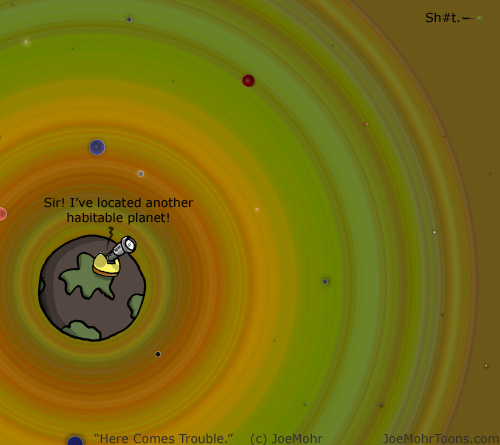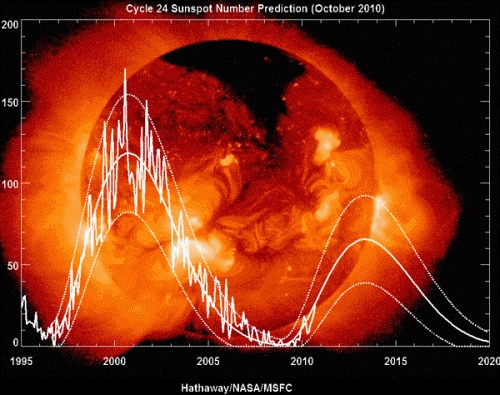The Earth’s magnetic field, or magnetosphere, protects life down on the surface from excess radiation (in the form of high-energy particles and waves) that originate from the solar wind. But this protection is not full-proof.
A recent study based upon observations from the European Space Agency’s (ESA) Cluster satellite mission shows that our magnetosphere experiences regular “breaches” that let in the solar wind.
The ESA Cluster mission consists of four satellites that fly through the Earth’s magnetosphere (which extends out into space for many thousands of miles) in close formation. Measuring instruments on board the satellites record changes in the Earth’s electric and magnetic fields due to the interaction with the sun’s solar wind (which produces its own fluctuating electromagnetic fields).
Analysis of data from the 2006 Cluster observations detected large vortices of solar plasma arising as the solar wind made contact with the magnetosphere. These plasma “whirlpools” consist of electromagnetic waves known as Kelvin-Helmholtz waves (KHW), which look much like classic, rolling, “surfer” waves.
Indeed, the effect of these vortices on the magnetosphere is similar to that of the wind acting upon ocean waves. Whenever two fluids of differing speeds and densities come together and move in parallel to each other, KHWs are typically formed at the interface of the two fluid layers (note: both earth and solar winds behave like fluids).
This wave effect is known as the Kelvin-Helmholtz Instability (KHI). The KHI has been detected in deep sea ocean currents and even on the surface of Saturn. This is the first time such waves have been detected at the outer boundary of the Earth’s magnetosphere.

And like the destructive power of ocean waves, these plasma waves can violently break apart and reconnect magnetic field lines, creating sudden openings or breaches in the the protective magnetic field, allowing solar particles to stream in.
Scientists have understood for awhile that the magnetosphere is not a perfect “magnetic bubble” and was subject to occasional disruption. This new analysis has found that these breaks occur almost continuously. Further, the study also found that these breaks and leaks can occur under a wide range of “interplanetary magnetic field (IMF) conditions”.
“The solar wind can enter the magnetosphere at different locations and under different magnetic field conditions that we hadn’t known about before,” explained astrophysicist Melvin Goldstein of Goddard Space Flight Center (GSFC) in a press statement. “That suggests there is a ‘sieve-like’ property of the magnetopause [the outer edge of the magnetosphere] in allowing the solar wind to continuously flow into the magnetosphere.”
Many of these vortices are quite massive and some can grow to nearly 25,000 miles (almost 40,000 kilometers) in diameter. It is not yet clear if the size of the plasma whirlpools determines the size (or number) of these magnetic field breaks.
However, evidence suggests that if the solar plasma hits at a perpendicular (90º) angle to the Earth’s magnetic field — such as at the poles — this can greatly destabilize the boundary between the two fields, generating more of the Kelvin-Helmholtz waves/instabilities, and consequently, more magnetosphere leaks or breaches.
In the press statement, study leader Kyoung-Joo Hwang (also at GSFC) said:
“We found that when the [solar wind] magnetic field is westward or eastward, magnetopause boundary layers at higher latitude become most subject to Kelvin-Helmholtz instabilities, regions quite distant from previous observations of these waves. In fact, it’s very hard to imagine a situation where solar wind plasma could not leak into the magnetosphere, since it is not a perfect magnetic bubble.”
Powerful blasts of charged particles from the solar wind can disrupt radio satellite and GPS communication systems and even power grids down on the ground. They may also, of course, play a role in atmospheric warming. To what extent this newly confirmed activity will impact climate forcings is unknown The findings of this study do not address the potential effects of magnetosphere breaches on climate change.
Previous studies have found antimatter trapped in the Earth’s magnetosphere. Our own planet (and its immediate space environment) continues to surprise us with new phenomena, new discoveries, and new puzzles.
The new GFSC study, The first in situ observation of Kelvin-Helmholtz waves at high-latitude magnetopause during strongly dawnward interplanetary magnetic field conditions was published Aug. 29 in the Journal of Geophysical Research.


